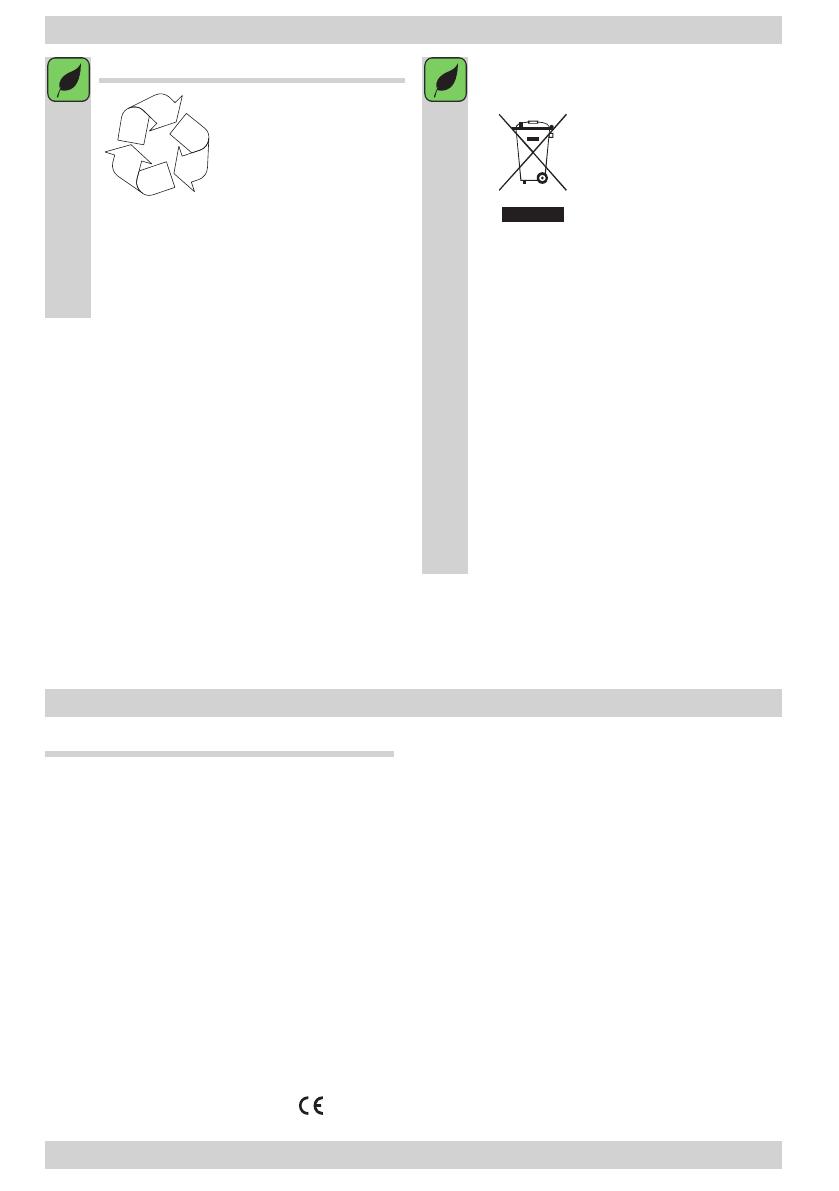
47
ENVIRONMENTAL PROTECTION
Recycling of the packaging
Our packaging is made of envi-
ronmentally friendly materials,
which can be reused:
l The external packaging is made of cardboard/
foil
l The FCKW free shape of foamed polystyrene
(PS)
l Polyethylene (PE) foils and bags
ELIMINATION / DISPOSAL OF THE EU-
IPMENT
If the appliance is no
longer in use, cut the con-
necting cable off the used
equipment before scrap-
ping. We also recommend
that the appliance is locked
or render it useless so that
the appliance presents no
danger to children while being stored for
disposal. This appliance is marked with a
symbol of the crossed out waste container
in conformance with the European Directive
2002/96/EC. Such marking informs that the
equipment may not be kept together with
other waste coming from the household af-
ter the period of its use. The user is obliged
to dispose of the appliance at the waste col-
lection point authorised by the local author-
ity. The local waste collection points, shops
and communal units form an appropriate
system enabling the disposal of the equip-
ment.
Handling the used electrical and electronic
equipment and any hazardous substances
contained therein in a correct manner is vi-
tal to avoid damage the local natural envi-
ronment. Therefore care and responsibility
should always be taken in the disposal of
these products
Manufacturer’s Declaration
The manufacturer hereby declares that this product meets the requirements of the following European
directives:
l Low Voltage Directive 2006/95/EC,
l Electromagnetic Compatibility (EMC) Directive 2004/108/EC,
l ErPDirective2009/125/EC
and has thus been marked with the symbol and been issued with a declaration of compliance made
available to market regulators.
Warranty
Warranty service as stated on the warranty card
The manufacturer shall not be held liable for any damage caused by improper use of the product.
WARRANTY AND AFTER-SALE SERVICES













